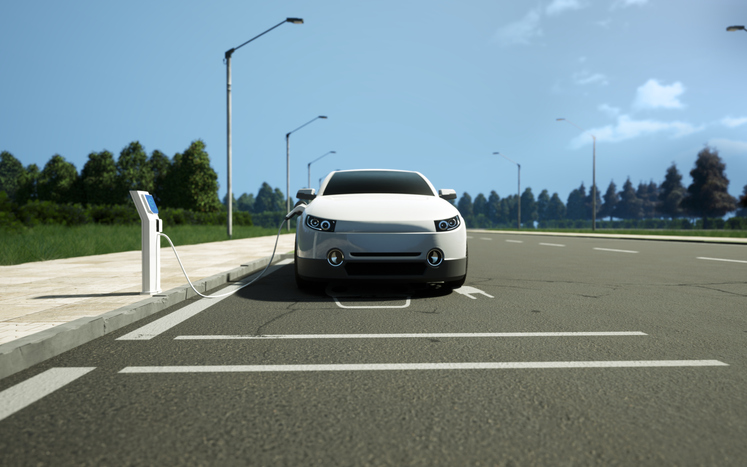It’s summer, and for many families who have been cooped inside for much of the past year, a road trip is sounding better and better. If you own one of the approximately 2 million electric vehicles in the United States, you will enjoy some distinct advantages—but you’ll also need to remember a few crucial points about operating your EV on the nation’s roads and highways.
1. Expect the Unexpected
Experienced owners will tell you that if there’s one thing to prepare for when traveling in your EV, it’s to be surprised.
In a recent Washington Post article, the writer related his family’s meticulous plotting out of their route, noting all the charging stations along the way. In mapping out their path, they had determined where they would have the most luck topping off their battery. Heading toward their first stop, an EV dealership about 150 miles from their starting point, they knew they were also still within their 80-mile comfort zone.
While the dealership offered free charging, the equipment had not been kept up-to-date. The travelers found that after an hour of charging, they had replaced only 35 miles on their battery, far less than the 150 they’d anticipated. What was worse, the next charging station on their route was close to 200 miles away, in the next state over. The discrepancy threw off all their later calculations, sending them from Plan B to a point much farther down the alphabet.
Other common problems EV owners face includes long lines at charging stations, problems with communication between their cars and specific chargers and finding their chosen charging sites unavailable due to maintenance.
The basic lessons: Always make a back-up plan and don’t wait until your car is almost out of charge before looking for a station. You will want to avoid remote charging stations that may not be working when you arrive, or see if a friend or relative in the area where you’ll be traveling can lend you their garage if you need an emergency charge.
2. Map Your Charging Points
Apps such as ChargeHub and PlugShare offer an easy way to help you find the next-available public charging site. And Google Maps lets you search to find exactly the type of charging station you’re looking for.
Experienced EV road trippers advise looking for Level 3, or DC fast charging, locations whenever you can. These typically only take an hour or less to boost your battery back to 80 percent. Level 2 charging stations, the most frequently encountered type made available to the public, can take eight hours to bring your battery back to a full charge.
Many public charging points are located near places where you can enjoy shopping, dining or sightseeing while your car is charging, so try to plan these stops around the most pleasant rest stops along your route.
Be aware that most RV parks offer Level 2 chargers and are set up to accept EVs. You will also find an increasing number of hotels that can charge your vehicle.
3. Learn the Language
The world of EVs has a system of acronyms and terms all its own. Knowing the meanings of terms like “ICEing” will help you at least describe, and often get beyond, the many problems inherent to being on the road in an EV.
ICEing refers to the situation in which a parked conventional vehicle—with an internal combustion engine, hence the acronym—blocks access to a charging station. Sometimes this is unintentional, but plenty of EV owners feel that it’s sometimes done as a commentary on their choice of car. You might find yourself in what is literally a tight place as you try to jockey your EV into charging position.
There are a number of helpful web pages listing insider acronyms and basic information of interest to EV owners.
4. Be Aware of Changing Performance Conditions
You might assume that, since they are the products of the most advanced 21st-century technologies, EVs are all pretty uniform in their handling and road behaviors. Think again. Each vehicle makes and model has its own distinctive features, and you’ll want to know what they are. Battery usage efficiency, for example, varies widely.
Your car’s performance and battery range are also subject to fluctuations based on weather conditions, as well as on your own driving style. Keep these factors in mind when calculating your itinerary and stopping points.
You can cut down on battery usage by turning off your heat and A/C when possible, lessening your pressure on the accelerator and taking advantage of your EV’s regenerative braking system, designed to transfer kinetic energy from the braking process to the battery.
On a similar note: When you start your car, the first thing it does is ensure that the battery is at the right temperature, which drains a lot of energy. If you are traveling in cold weather, minimize this loss by keeping your EV plugged in as you power it up.
The best way to learn your EV’s idiosyncrasies is to do a test run before your big road trip. That, combined with a thorough knowledge of your owner’s manual and your mechanic’s advice, will prepare you to work out many issues beforehand.
GREEN ENERGY IS SMART, SUSTAINABLE AND COST-EFFECTIVE
Join over 250,000 residential and business customers who have already switched to Verde Energy USA.



